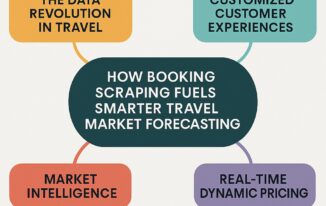During open enrollment seasons, the insurance industry encounters specific operational challenges. Agencies find it difficult to sustain quality service levels since customer volume increases during specific periods. When the properly trained seasonal workforce is brought on board, they can successfully close these gaps in service. This definitive document reveals established methods for insurance agencies to develop effective seasonal personnel operations. A set of practical implementation strategies designs a streamlined insurance business process for agencies.
Early Planning and Need Assessment
Insurance agencies must begin preparing their seasonal hiring process at least three months before the start date. The leader needs to examine historical data from prior years to discover typical peak use times along with workforce patterns. The evaluation must contain previous season data, which measures customer service delivery and processing period lengths. During planning, managers must decide what positions must be filled and what essential skills will be required for temporary staff. Detailed job descriptions serve two functions by defining what hiring teams and candidates need to fulfil. The ratio of budget planning during the initial phase should include funds for staff recruitment plus training initiatives.
Strategic Recruitment Process
Various recruitment channels are available for insurance agencies to discover qualified employees during seasonal periods. Temporary workers seeking experienced positions usually browse local job boards alongside insurance industry websites. Through social media channels, agencies can easily connect with millennial professionals who want hands-on industry experience. Local colleges must participate in strategic alliances that help students study insurance or business management. People who have shown excellence in seasonal work should get special consideration when rehiring. When your organization introduces an employee referral initiative, it enables active staff to identify suitable job seekers for open positions.
Effective Screening and Selection
The assessment method for candidate selection must identify candidates whose customer service abilities are strong. Fast and effective assessments of communication skills along with professional behavior begin with an initial phone screening. Insurance industry regulations and customer trust stay protected through the use of background checks. Assessments of technical skills test candidates’ computer competencies and their understanding of standard software applications. Past employer assessments reveal important information about how candidates demonstrate reliability along with their work ethic.
Structured Onboarding Program
Structured onboarding programs help businesses build a smooth transition for their seasonal staff into their agency framework. The first week of orientation is built around company culture and essential administrative procedures along with policies. All new employees must have immediate access to the necessary workplace systems on the first day. Team-based introductions paired with mentor-pairing assignments give seasonal workers better learning opportunities. For example, employers should keep separate channels through which they inform temporary staff of their resources for help.
Comprehensive Training Framework
Complete training outcomes are developed by combining classroom theory education with practical exercises in successful training programs. Start from basic insurance basics before moving to individual services with their particular products. Role-playing training helps staff learn to respond to typical customer interactions and client objections. Computer systems training lets both processes work expeditiously and generate documents quickly. Scheduled assessment tests identify deficiencies in knowledge and guide the supplemental training requirements.
Performance Monitoring and Support
Organizations can detect and resolve issues that seasonal staff members encounter through regular check-in sessions. Supervisors must deliver helpful performance reviews while employees complete their first few weeks on the job. New seasonal employees need performance metrics that reflect sensible expectations for their position. Implementing peer learning programs enables workers to find more effective solutions to standard issues. The support framework must include reference materials and experienced team members.
Quality Control Measures
Quality control programs lead to reliable service quality from seasonal staff. Teamwide consistent service standards result from routine evaluations of staff interactions with customers. Regular feedback collected from regular staff members tells supervisors about their seasonal workers’ effectiveness and enables them to understand integration issues. Reviewing documentation helps identify and repair standard errors before customers encounter them. Performance data enables the evaluation of present recruitment methods as well as training programs for future employee selection processes.
Retention and Future Planning
Insurance Agencies use exceptional seasonal workers to become permanent team members. Organizations obtain key insights from exit interviews that can help improve the organization’s upcoming seasonal employment programs. The more regular contact with outstanding performers, the higher the probability of these performers returning during the next season. A second use of performance data is to generate better training methods for future seasonal workers. A talent pool development strategy reduces future peak workload period recruitment requirements.
Conclusion
Seasonal staffing in successful businesses must set aside thorough planning, followed by structured training and continuous support systems. The better the state of operational results from a comprehensive hiring and training program for insurance agencies, the better that is for them. They follow the process of building on essential components to execute effective seasonal workplace demand management. A good strategic plan allows an organization to maintain a consistent service level through high volume times. It allows you to create your own seasonal workforce planning methods.




